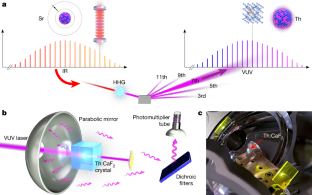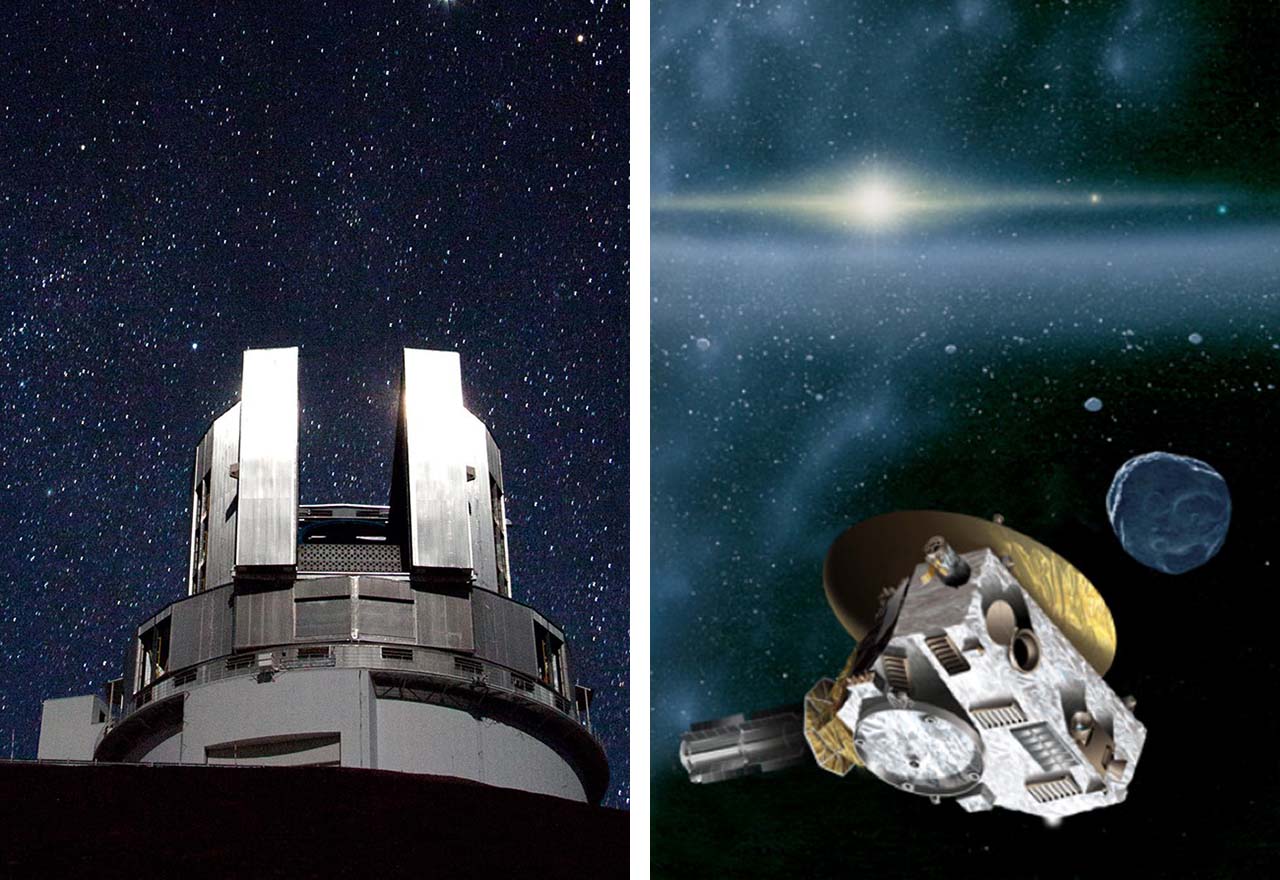2024-09-04 米国国立標準技術研究所(NIST)
<関連情報>
- https://www.nist.gov/news-events/news/2024/09/major-leap-nuclear-clock-paves-way-ultraprecise-timekeeping
- https://www.nature.com/articles/s41586-024-07839-6
229mTh核異性体転移の周波数比と87Sr原子時計 Frequency ratio of the 229mTh nuclear isomeric transition and the 87Sr atomic clock
Chuankun Zhang,Tian Ooi,Jacob S. Higgins,Jack F. Doyle,Lars von der Wense,Kjeld Beeks,Adrian Leitner,Georgy A. Kazakov,Peng Li,Peter G. Thirolf,Thorsten Schumm & Jun Ye
Nature Published:04 September 2024
DOI:https://doi.org/10.1038/s41586-024-07839-6

Abstract
Optical atomic clocks1,2 use electronic energy levels to precisely keep track of time. A clock based on nuclear energy levels promises a next-generation platform for precision metrology and fundamental physics studies. Thorium-229 nuclei exhibit a uniquely low-energy nuclear transition within reach of state-of-the-art vacuum ultraviolet (VUV) laser light sources and have, therefore, been proposed for construction of a nuclear clock3,4. However, quantum-state-resolved spectroscopy of the 229mTh isomer to determine the underlying nuclear structure and establish a direct frequency connection with existing atomic clocks has yet to be performed. Here, we use a VUV frequency comb to directly excite the narrow 229Th nuclear clock transition in a solid-state CaF2 host material and determine the absolute transition frequency. We stabilize the fundamental frequency comb to the JILA 87Sr clock2 and coherently upconvert the fundamental to its seventh harmonic in the VUV range by using a femtosecond enhancement cavity. This VUV comb establishes a frequency link between nuclear and electronic energy levels and allows us to directly measure the frequency ratio of the 229Th nuclear clock transition and the 87Sr atomic clock. We also precisely measure the nuclear quadrupole splittings and extract intrinsic properties of the isomer. These results mark the start of nuclear-based solid-state optical clocks and demonstrate the first comparison, to our knowledge, of nuclear and atomic clocks for fundamental physics studies. This work represents a confluence of precision metrology, ultrafast strong-field physics, nuclear physics and fundamental physics.



